2nd day of Lunar New Year: A day of joy and tradition
Writer: Song Yingwen | Editor: Zhang Zhiqing | From: Shenzhen Daily | Updated: 2025-01-30
The second day of the Chinese New Year is a vibrant tapestry of traditions that weave together themes of renewal, prosperity, and familial bonds. This day is rich with customs that not only honor ancient beliefs but also adapt to contemporary practices, ensuring the cultural heritage remains alive and engaging.
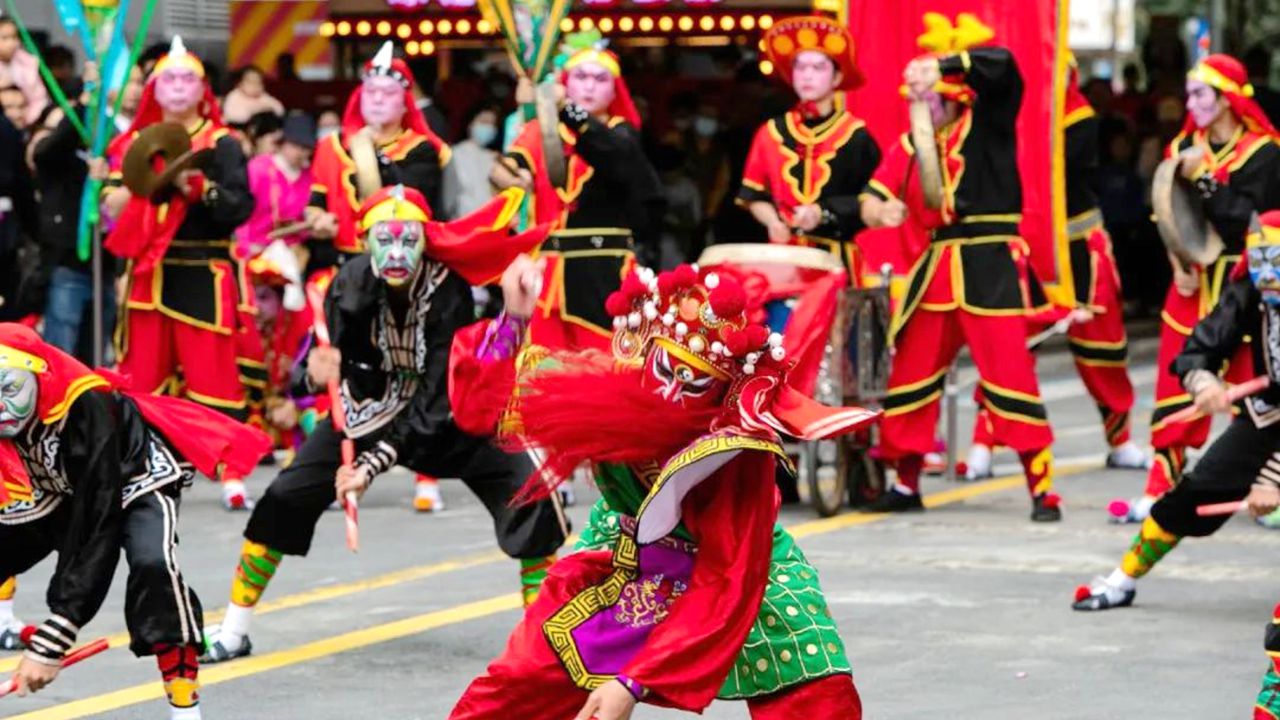
A vibrant Yingge dance performance enchants spectators in Bao’an District during last year's Spring Festival in February 2024. Shenzhen Special Zone Daily
Reconnecting with family: The return of married daughters
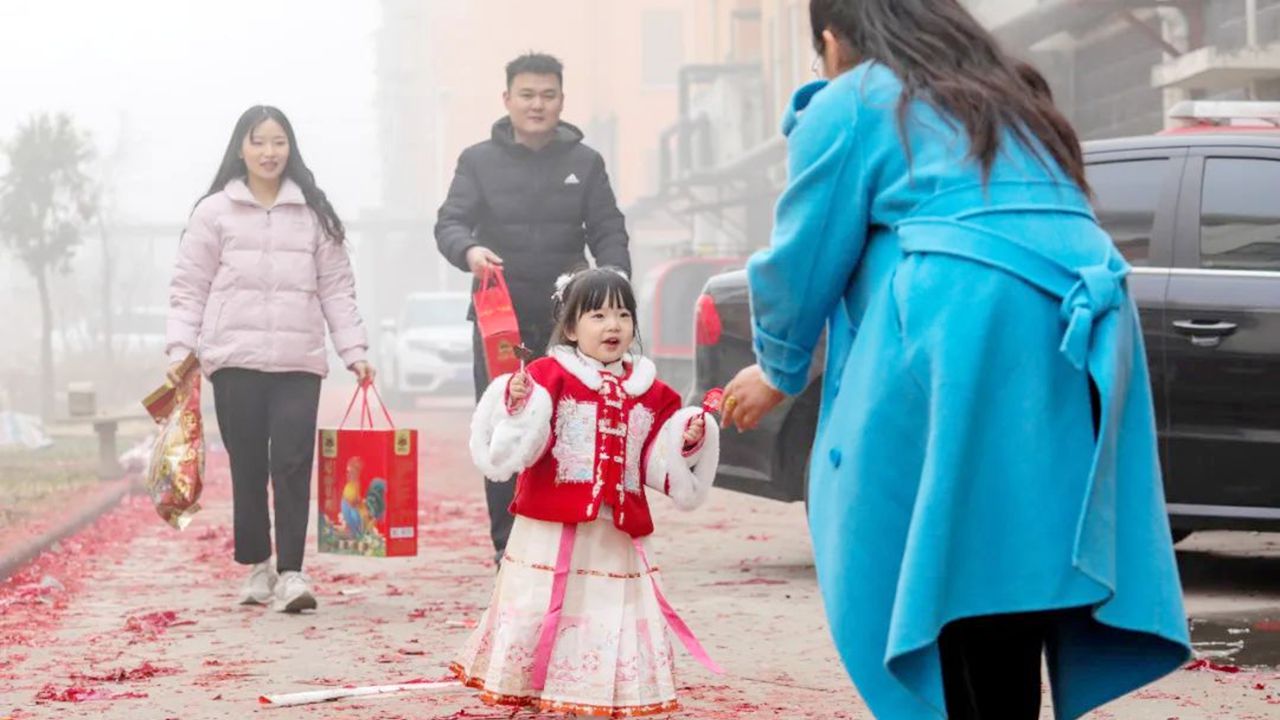
A couple, accompanied by their child, visits the wife’s family home in Jisuo Community, Jisuo Town, Tengzhou City, Shandong Province, on Feb. 11, 2024, honoring the traditional Lunar New Year custom of married daughters returning to their parental homes. Xinhua
Traditionally, the second day is significant for married daughters returning to their parental homes. In ancient China, once a woman married, she became part of her husband's family and seldom visited her own. Thus, this day, often referred to as "Son-in-law's Day," was reserved for daughters and their husbands to visit their birth families, bringing gifts and well-wishes. This custom reinforces familial bonds and honors the bride's family.
Honoring the God of Wealth: Inviting prosperity
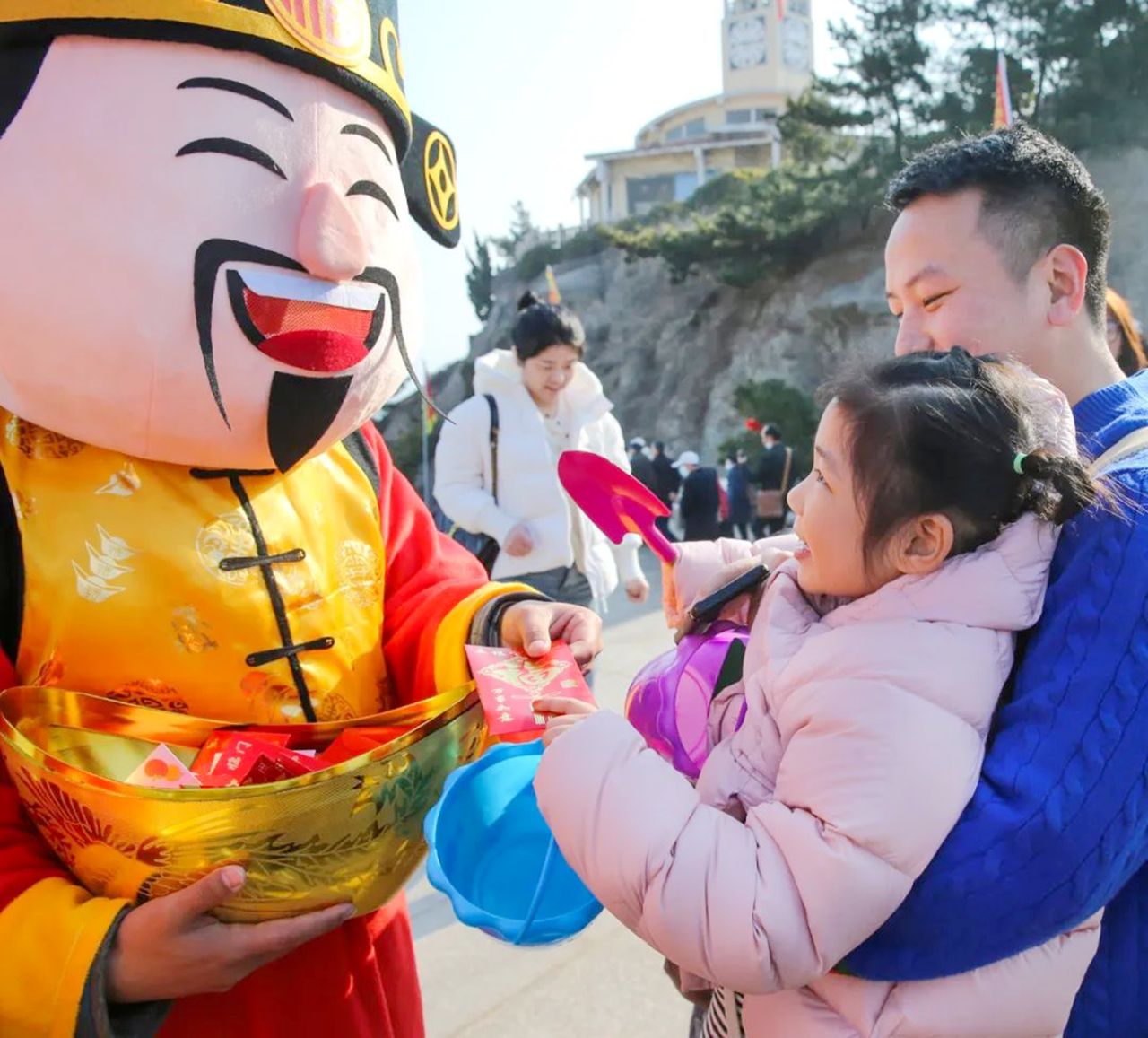
The"God of Wealth" hands out red envelopes to visitors at Lian Island Scenic Area in Lianyungang, Jiangsu Province, during last year's Spring Festival in February 2024. Xinhua
The second day is also dedicated to the God of Wealth in the nortern part of China. Families perform rituals and offer sacrifices to invite prosperity into their homes. In historical contexts, individuals would carry images of the God of Wealth, proclaiming his arrival, and households would respond by giving "lucky money" to these messengers, symbolizing a wish for financial success in the coming year.
Dragon and lion dances: Awakening the spirit of prosperity
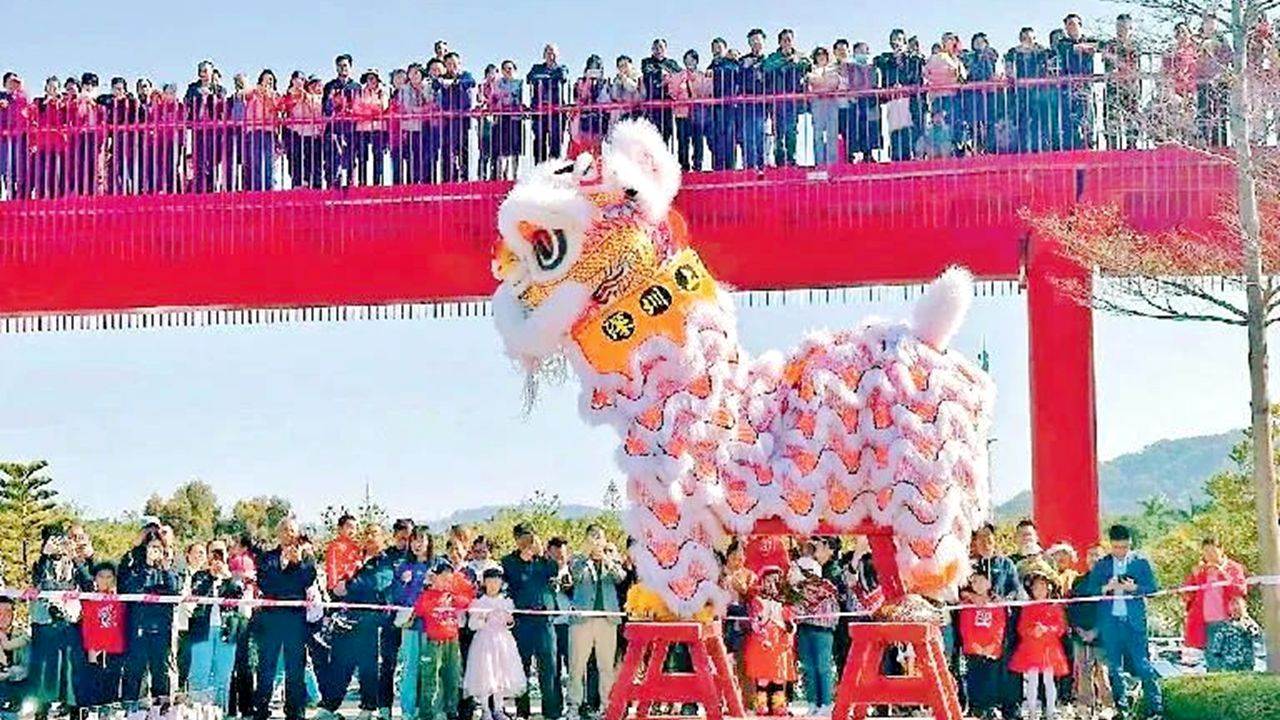
A lion dance performance captivates a large crowd at Hongqiao Park in Guangming District during last year's Spring Festival in February 2024. Bao'an Daily
The dragon and lion dances are iconic performances during the Spring Festval that captivate audiences with their rhythm, energy, and symbolism. These dances are deeply rooted in Chinese folklore and are believed to ward off evil spirits and summon blessings for the year ahead.
The dragon symbolizes power and prosperity, while the lion represents courage and strength. Traditionally, these dances are performed at businesses, homes, and public spaces to "wake up" prosperity for the new year. The loud beats of drums, cymbals, and gongs accompanying the dances are believed to scare away evil spirits.
Temple fairs: A journey through heritage
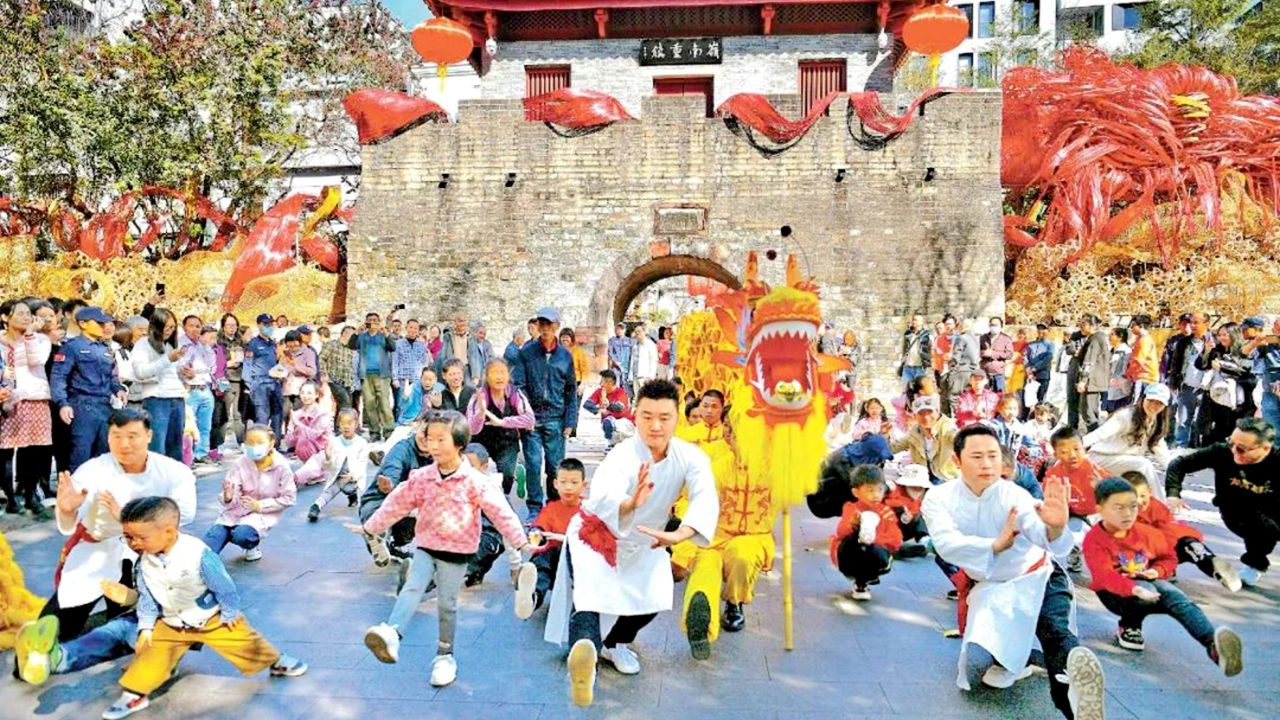
A flash mob performance featuring the traditional martial art Wing Chun draws visitors at a temple fair in Nantou Ancient City in Nanshan District during last year's Spring Festival in February 2024. Shenzhen Special Zone Daily
Temple fairs, or "miaohui" (庙会), are vibrant hubs of cultural festivities that combine religious rituals with entertainment.
Traditionally on this day, families visit temples to burn incense, pray for blessings, and honor their ancestors. The air is filled with the fragrance of incense as people express their hopes for health, happiness, and prosperity.
These fairs also feature performances such as traditional opera, martial arts, and acrobatics, showcasing the richness of Chinese folk art. Food stalls offer snack and treats like "tanghulu" (candied hawthorn) and "baozi" (steamed buns), while craft stalls sell handmade items, allowing visitors to take home a piece of tradition.
Modern adaptations: Embracing technology
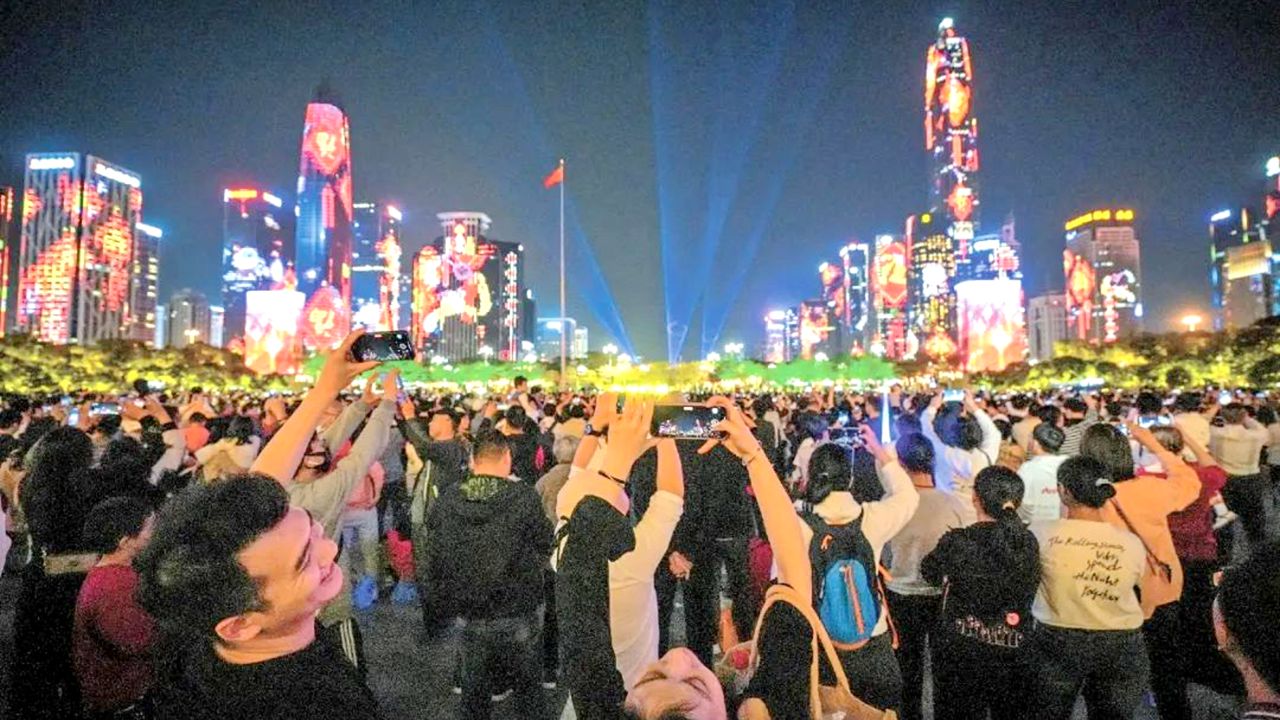
Visitors gather to witness a dazzling tech-driven light show at the Civic Center in Futian during last year's Spring Festival in February 2024. Shenzhen's embrace of digital innovation has made light shows and drone displays a centerpiece of modern festival celebrations. Shenzhen Special Zone Daily
As society evolves, so do the methods of celebrating these traditions. Technological advancements have introduced new ways of engaging with customs, ensuring they remain relevant in the digital age.
From virtual temple fairs to augmented reality-enhanced dragon dances, digital platforms have transformed how people interact with these traditions.
Digital "hongbao" (red envelopes) and online blessings allow families separated by distance to stay connected, while virtual spaces recreate traditional festivities, enabling a broader audience to experience the cultural richness of the Spring Festival.